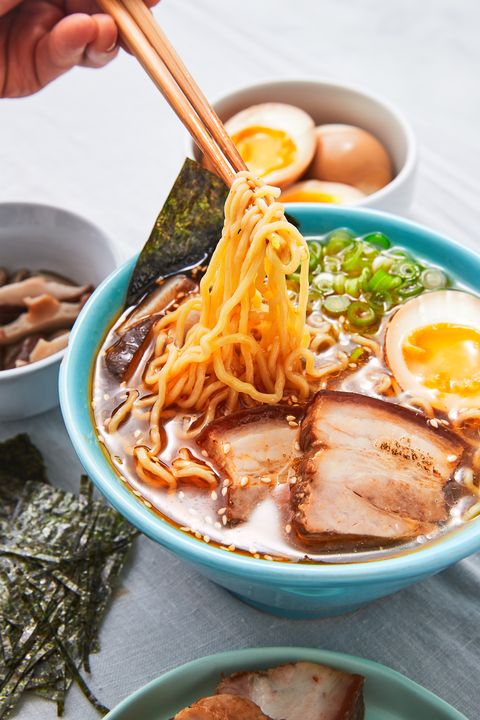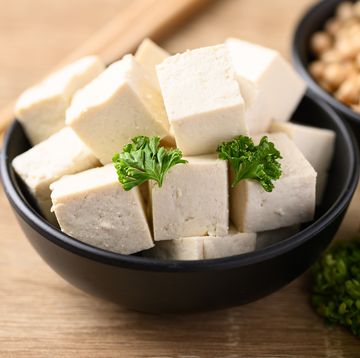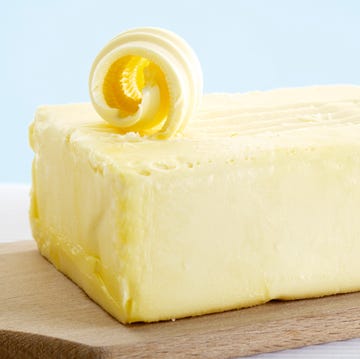When it comes to flavor, there's sour, sweet, salty, and bitter. You can probably name foods that fall into each of those categories. But what about umami? It's that sometimes forgotten-about fifth element of taste that can be hard to describe. We reached out to chefs who create umami-rich dishes every day to figure out what umami is, what ingredients have it, and how you can use it in your kitchen.
Jump to:
What Is Umami?
What Ingredients Have Umami?
How Do You Know When You're Tasting Umami?
How Can You Add Umami To Your Cooking?
Umami-Rich Recipes
What Is Umami?
More From Delish

"Umami is a depth of flavor that creates a lusciousness that invigorates your palate, almost making it mouth-watering," said Allen Dabagh, chef at Boutros in New York City. "It’s as if what you're eating hugs your tongue and makes you want to go back for more because there is so much complexity."
Scientifically speaking, umami is "produced by several amino acids and nucleotides (such as glutamate and aspartate)" to give food a "rich, meaty flavor," said Hong Thaimee, chef and restaurant owner.
You'll find it in many cuisines, but it has a deep connection to Japanese food. "They realized there is some kind of deliciousness in broth made with dried fish, kelp, and dried shiitake—dashi—and have incorporated this into many dishes," said Fumitoshi Kano, owner of the Japanese food company Dashi Okume.
What Ingredients Have Umami?
"A lot of the umami created throughout history has been through fermentation or preservation," said Bill Kim, chef and owner of Urbanbelly in Chicago. "Think prosciutto and parmesan cheese, seaweed or dried fish. It's the concentrated flavors of whatever's being fermented."
You'll also find in in dried mushrooms, eggs, tomatoes, anchovies, miso paste, soy sauce, fish sauce, Worcestershire sauce, shrimp paste, and MSG.
"Japanese scientist Kikunae Ikeda, who discovered umami, also created monosodium glutamate, or MSG," Thaimee said. "After discovering that glutamate was responsible for the umami taste of some of his favorite foods, Ikeda made monosodium glutamate into a seasoning. That way, he could add umami flavor into every dish he made."
How Do You Know When You're Tasting Umami?
Dabagh likes to start with a simple mushroom broth. "I always get the response of 'How is this broth so velvety, almost fatty, and earthy at the same time?' and I say 'That's umami.' It’s a combination of all tastes coming together to make a whole new dimension of flavor and feel."
It can be hard to pick out, but once you taste it, you start to recognize it, and you want more. Foods with high levels of glutamate have a compound that binds to the receptors on your taste buds. "That's what causes the savory taste in your mouth," Thaimee said.
How Can You Add Umami To Your Cooking?
"The secret is to create an umami synergy," Kano said. "Umami synergy is an effect when the acid glutamate combines with acids guanylate or inosinate. The umami does not just double, but amplifies many times more. This can bring your dish to the next level."
To do this, combine kombu, which is rich in glutamate, and dried bonito, which is rich in inosinate, to make a miso soup. Or combine pork (high in glutamate) and cabbage (high in glutamate) for a dumpling filling. Or go for a minestrone soup with glutamate-rich tomato and guanylate-rich mushroom.
For a simpler approach, keep umami-rich ingredients in your pantry. "Open your mind to using cross-culture flavors," Thaimee said. "I find when I use a dash of fish sauce in my Italian-based tomato soup, it helps to bring up and pull together the flavor, and you would never guess there was fish sauce in an Italian soup." You can also go with the OG umami bomb: MSG.
Umami-Rich Recipes













